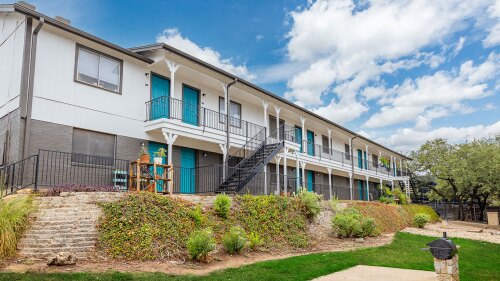This article is republished with permission from REITCafe.
For the first time in almost a year, weekly U.S. revenue per available room (RevPAR) declined as of April 4. In addition, results were mixed for the week ending April 11, according to an STR Global report (formerly Smith Travel Research). Lower occupancy largely offset average daily rate (ADR) growth during these two weeks, resulting in lackluster RevPAR growth. STR attributed the early-April decrease in RevPAR to temporary weakness around Passover and Easter, noting that it expects trends to quickly turn positive again.
In fact, the improving U.S. economy and low gas prices have boosted demand while new supply has stayed low in most markets, keeping lodging market fundamentals strong and boosting both business travel and tourism. U.S. business travel spending is expected to grow by 3.1 percent to $295.7 billion in 2015, as reported in the GBTA BTI™ Outlook–United States 2015 Q1. Occupancy, ADR, and RevPAR growth were all positive during the first three months of 2015, according to STR.
| TREPP-i Survey Loan Spreads (50-59% LTV)* |
| This Week | Previous Week | Prev. Month | End 2014 | End 2013 | |
| Industrial | 153 | 151 | 146.6 | 138.5 | 170 |
| Retail | 155 | 154 | 146.6 | 139.8 | 175 |
| Office | 154 | 156 | 154.8 | 148 | 175 |
| Multifamilty | 147 | 146 | 144.6 | 139.8 | 166.7 |
| Average Spread | 152.25 | 151.7 | 148.2 | 141.5 | 171.7 |
| 10-year Treasury Yield** | 1.85 | 1.95 | 1.8 | 2.17 | 3.04 |
Regardless, investor sentiment toward lodging real estate investment trusts (REITs) turned negative well before these results were released on concerns about decelerating RevPAR growth and the strong U.S. dollar. The strong dollar and slower global growth are affecting foreign travel to the United States—especially New York City, where many REITs have investments. Investors may believe that hotels are near the peak of their growth cycle and that future growth will be slower or declining. They are also concerned about high valuations of lodging REITs following several years of strong returns, including a total return of 32.5 percent in 2014. Year-to-date through April 15, lodging REIT returns totaled –6.83 percent.
Host Hotels & Resorts (NYSE: HST), the largest lodging REIT, has contributed to the poor 2015 performance. HST represents more than one-fourth of the lodging sector’s market capitalization, and its stock, which peaked in December, has declined about 15 percent year-to-date in spite of fourth-quarter funds from operation that handily beat estimates. The company increased its earnings guidance, but investors are wary.
Investors are worried about supply, too. About 3,600 projects totaling 434,000 rooms are planned or under construction in the United States, as reported in the March 2015 STR Pipeline Report. The 126,000 rooms under construction in March represented a 23 percent increase from year-ago levels. New York City had the greatest number of rooms under construction and planned. Houston ranked second for rooms under construction, followed by Miami and Chicago.
Land and construction costs have increased, especially as urban developers face competition from residential and other builders for land. Because new construction is becoming more difficult, the number of planned projects that progress to construction could decrease.
Robust sector fundamentals and a 3.66 percent dividend yield make lodging REITs attractive. Even if hotels are at or near their peak for this cycle, the sector has room for further growth. PKF and Hospitality Research forecast 7.3 percent growth in RevPAR for 2015, driven by a 1.9 percent gain in occupancy and a 5.3 percent increase in ADR. RevPAR growth will slow to 6.5 percent in 2016, according to PKF and HR. The potential for growth in profitability at a time when stock prices have been driven down could indicate a good time to buy lodging REITs.
* TREPP-i Survey Loan Spreads levels are based on a survey of balance sheet lenders. For more information, visit Trepp.com. ** - 10 yr. Treasury Yield as of 4/17/2015




